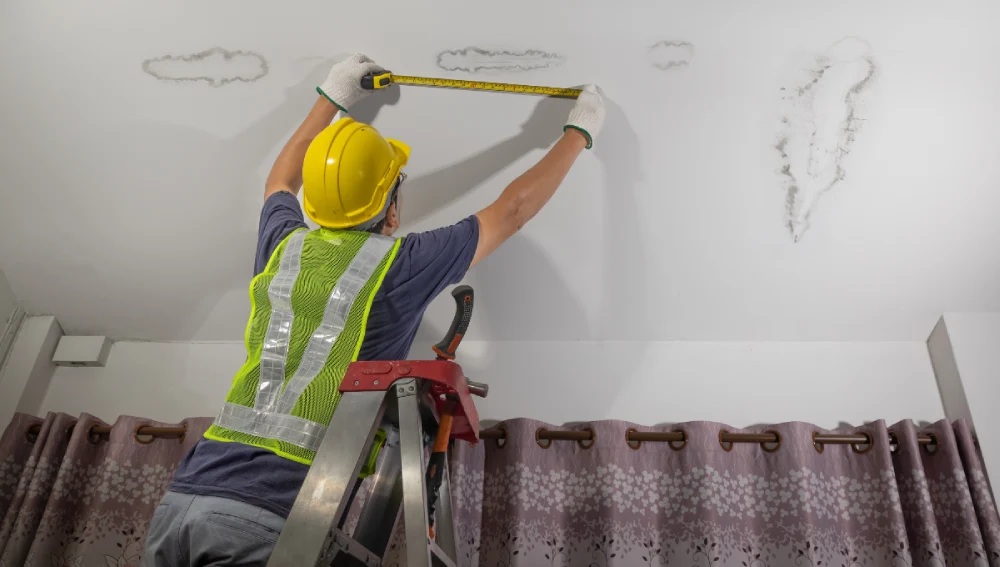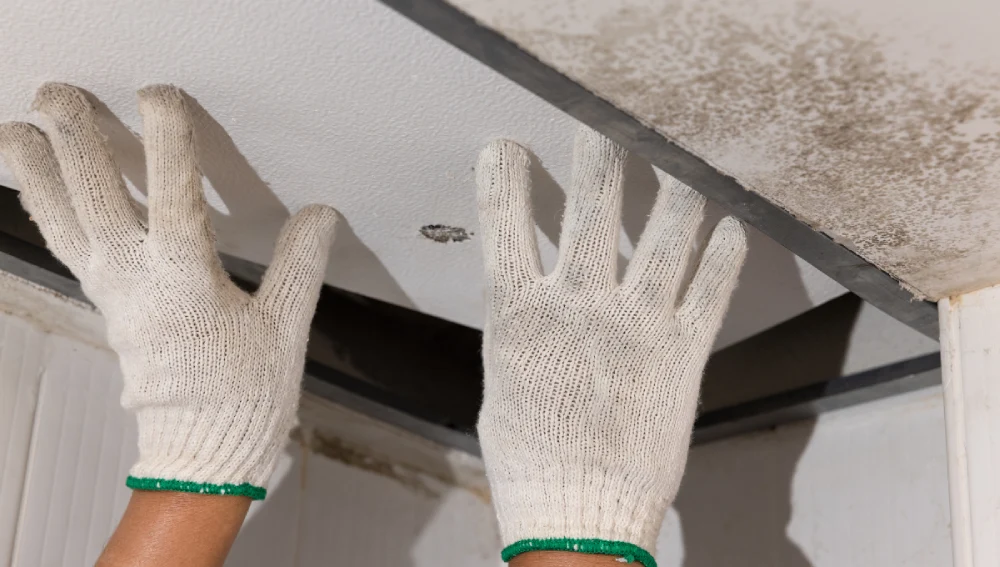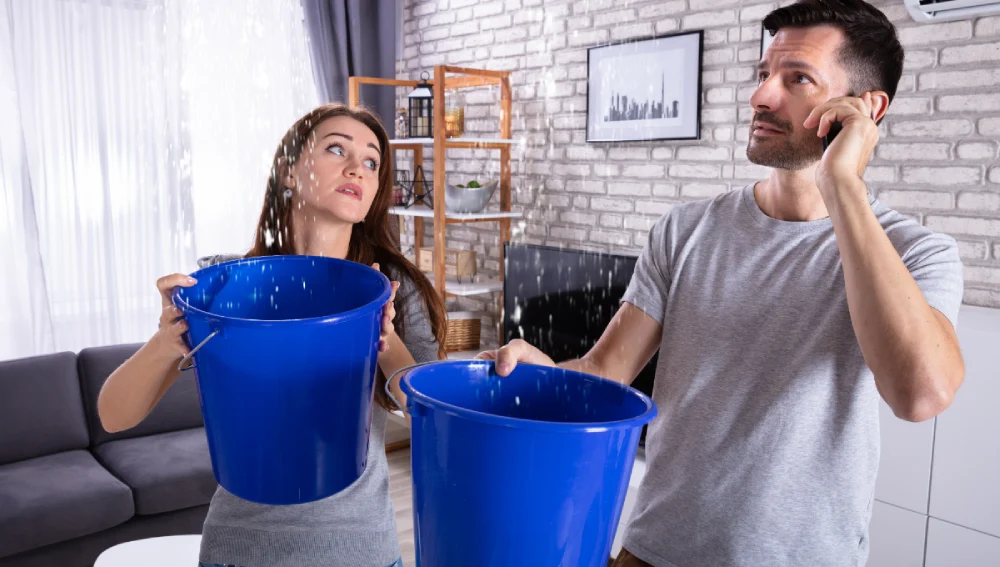Roof leakage is a common problem encountered by homeowners and building managers. It causes inconvenience and structural damage and is not rectified. This blog provides you the information for understanding, identifying and providing some permanent solutions for roof leakage.
Understanding Roof Leakage
Roof leakage happens when the water goes into the roof system. That is, water penetrates through the building’s interior. This may occur because of various reasons. Some of the reasons are poor installation, weather damage and so on.
Some of the common signs of roof leakage include,
- Water stains that are visible on ceilings and walls
- Formation of moulds in attics or walls
- Damp spots or water puddles in attics
- Peeling of paints or wallpapers
- Musty odours
- Increased humidity levels in the buildings.

Common Causes of Roof Leakage
There are certain causes that leads to leakage in roofs and the causes are explained below:
Poor Installation
The main cause of roof leakage is poor installation technique. This may be due to incorrect placing of shingles, faulty flashings, vents and skylights. Improper sealing in roof penetrations.
Weather Damage
Weather is another important factor that causes damage to roofs. The heavy rains can cause water to pool in the roof and can seep into the roof. Storms and high winds lift shingles or break the roof. Snow and ice will accumulate and cause problems in drainage. Freezing and thawing cycles can lead to cracks in the roof.
Ageing of Roof Materials
All materials used in the roof have expiry dates. After a long time, they will degrade and become less effective.
Clogged Gutters and Downspouts
Clogged Gutters and Downspouts can cause roof leaks.
Permanent Solutions for Roof Leakage
The below steps helps you to permanently prevent the roof leakage and are described below:
Regular Maintenance and Inspection
The first line of defence against roof leaks is regular maintenance. That is a biannual check for any signs of damage to the roof. Minor issues need to be addressed immediately. Maintaining proper water flow by cleaning the gutters and downspouts.
High-quality Roofing Material
It is a good choice if you can use high-quality roofing materials. This can help increase the life of the roof and prevent leaks. Metal roofings can be used for protection from weather damage. Synthetic shingles can be used for improved performance. High-grade asphalt shingles can be used for long-term performance and resistance properties.
Proper Installation Techniques
Correct installation is required for your roof. So hire experienced and reputable roofing contractors. It will be great to follow the manufacturer’s guidelines. Pay special attention to the leak area.
Effective Waterproofing
This gives extra protection to the roofs against leakage. Different types of waterproofing can be used. Liquid-applied membranes help in forming barriers over the roof. Sheet membranes like bituminous and rubberized asphalt, can provide strong waterproofing. Spray polyurethane foam can help in continuous and insulated barriers.
Sealing and Flashing
Proper sealing and flashing are needed for the prevention of roof leakage. Use of high-quality sealants, installing flashings properly and regular inspections can help in preventing leaks.
Attic and Ventilation Considerations
For the maintenance of roof health proper attic and ventilation is necessary. This can help in the reduction of moisture. Extends the roofing materials’ lifespan and improves energy efficiency (temperature regulation).
Advanced Roofing Technologies
Some advanced roofing technologies can help in the prevention of roof leakage.
Modern Roofing Systems: It includes cool roofs, built-up roofs and modified bitumen roofing.
Smart Roof Monitoring Systems: Here sensors are used. Also integration of home automation systems used for monitoring.
Green Roofing Solutions: They provide environmental benefits. Their key benefits are improved insulation. Management of stormwater and UV and temperature protection.

Step-by-Step Guide to Fixing Roof Leaks
Some common steps in fixing roof leaks are
- Source identification
- Temporary Fixes
- Permanent Repair Process
- Safety Considerations
In the Permanent Repair Process, certain steps can be followed.
Preparation
Gathering necessary tools and materials. Ensuring that safety measures are in place.
Remove Damaged Materials
Carefully remove damaged shingles, flashing, or other roofing materials.
Repair or Replace
Installing new materials and making sure that they are properly aligned and sealed.
Waterproofing
Apply a waterproof membrane or sealant to protect the repaired area.
Inspection
Conduct a thorough inspection to confirm the repair is effective and watertight.
Preventive Measures for Future Protection
Some important preventive measures can be followed for future protection. They are regular inspections, maintenance according to seasons and proper checking by homeowners.
Conclusion
Roof leakage can cause serious problems. They can cause more damage and repairs are costly. So they need to be addressed immediately. Roof leakage must be inspected regularly and the repair must be done immediately. This can help in maintaining a healthy roof for a long time.
FAQs
At least twice a year, also during spring and fall. Additionally after major weather events.
Some temporary fixes are by applying roofing cement or tape and covering damaged areas with a tarp.
Some roofing materials are metal, synthetic shingles and asphalt shingles that are of high grade.

